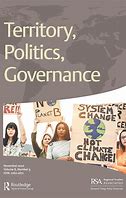After decades of scholarship, there is still little agreement about the usefulness of territorial self-governance in managing territory-centred conflicts.
In this freely accessible article in Territory, Politics, Governance, argue that the effectiveness of territorial self-governance as a tool of territory-centred conflict management increases when combined with a proportional representation (PR) electoral system for the national legislature in basically open political regimes, but not when combined with a parliamentary form of government at the centre. We propose that the combination of territorial self-governance and PR in at least minimally democratic regimes has most conflict-reducing potential, as both institutions follow a logic of widening the input side of representative politics.
We find empirical support for this proposition using binary time-series cross-section analysis. Our findings highlight the need to consider not just the number but, more importantly, the type of power-sharing institutions that are combined with each other when looking for ways to reduce the risk of territory-centred intrastate violence.
This article is an open-access publication.

